
Capture one 9 download Archives
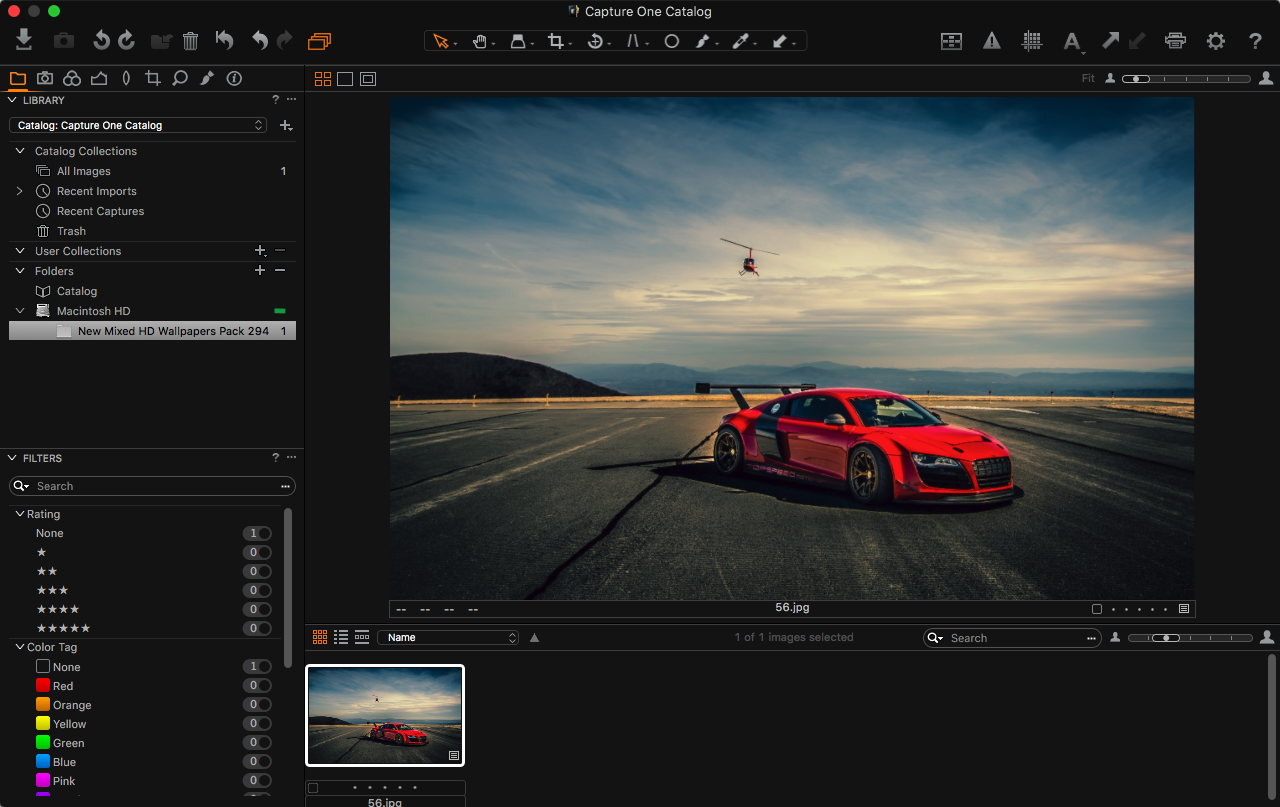
capture one 9 download Archives
USGS EROS Archive - Landsat Archives - Landsat 8 OLI (Operational Land Imager) and TIRS (Thermal Infrared Sensor) Level-1 Data Products
Back to Products Overview

Landsat 8 OLI/TIRS acquired
May 17, 2014 (Path 16,
Row 37)
(Public domain)
The Operational Land Imager (OLI) and Thermal Infrared Sensor (TIRS) are instruments onboard the Landsat 8 satellite, which was launched in February of 2013. The satellite collects images of the Earth with a 16-day repeat cycle, referenced to the Worldwide Reference System-2. The satellite’s acquisitions are in an 8-day offset to Landsat 7 (see Landsat Acquisition). The approximate scene size is 170 km north-south by 183 km east-west (106 mi by 114 mi).
The spectral bands of the OLI sensor, while similar to Landsat 7’s ETM+ sensor, provide enhancement from prior Landsat instruments, with the addition of two new spectral bands: a deep blue visible channel (band 1) specifically designed for water resources and coastal zone investigation, and a new infrared channel (band 9) for the detection of cirrus clouds. Two thermal bands (TIRS) capture data with a minimum of 100 meter resolution, but are registered to and delivered with the 30-meter OLI data product. (See Landsat satellite band designations for more information.) Landsat 8 file sizes are larger than Landsat 7 data, due to additional bands and improved 16-bit data product.
Landsat 8 Level 1 data products typically include data from both the OLI and TIRS sensor; however, there may be OLI-only and/or TIRS-only scenes in the USGS archive. The first two values of the Landsat 8 scene ID designates the data provided in each scene:
LC08_L1TP_003055_20170207_20170216_01_T1 = Combined (both OLI and TIRS data)
LO08_L1TP_021047_20150304_20170227_01_T1 = OLI data only
LT08_L1GT_137206_20170202_20170215_01_T2 = TIRS data only
A Quality Assurance (QA.tif) band is also included. This file provides bit information regarding conditions that may affect the accuracy and usability of a given pixel – clouds, water or snow, for example.
LandsatLook Images (full resolution files) are also available for Landsat 8 scenes, as they are for all previous Landsat scenes. In addition to the Natural Color, Thermal, and Geographic Reference bundle files available, Landsat 8 scenes also include a Quality .png file. This provides a visual representation the QA.tif file. See LandsatLook images for details.
Nearly 10,000 scenes were collected prior to the satellite achieving operational orbit, from launch to April 10, 2013. The earliest images are TIRS data only. These data are included in the Landsat 8 OLI/TIRS C1 Level-1 data set on EarthExplorer. While these data meet the quality standards and have the same geometric precision as data acquired after achieving operational orbit, the geographic extents of each scene will differ. Most of the scenes will process to full terrain correction, with a pixel size of 30 meters. There may be some differences in the spatial resolution of the early TIRS images due to telescope temperature changes.
Standard Processing Parameters
Following parameters applied for Processing and L1T Terrain Correction*.
| Processing: | Level 1T - Terrain Corrected |
|---|---|
| Pixel Size: |
|
| Data Characteristics: |
|
| Data Delivery: | HTTPS Download within 24 hours of acquisition |
Landsat 8 OLI/TIRS Collection 1
Landsat Tiers are the inventory structure for Landsat Collection 1 Level-1 data products and are based on data quality and level of processing. All scenes in the Landsat archive are assigned to a Collection category. The purpose of Collection categories is to support rapid and easy identification of suitable scenes for time-series pixel level analysis. During Collection 1 reprocessing, all Landsat 8 OLI/TIRS scenes in the USGS archive are assigned to a specific “Tier”. These data have well-characterized radiometric quality and are cross-calibrated among the different Landsat sensors.
Collection Category (Tier)
- Tier 1 (T1) – Contains the highest quality Level-1 Precision Terrain (L1TP) data considered suitable for time-series analysis. The georegistration is consistent and within prescribed tolerances [<12m root mean square error (RMSE)].
- Tier 2(T2) – Contains L1TP scenes not meeting Tier 1 criteria and all Systematic Terrain (L1GT) and Systematic (L1GS) scenes. Users interested in Tier 2 scenes can evaluate the L1TP RMSE and other properties to determine suitability for use in their applications and studies.
- Real-Time(RT) – Contains newly acquired Landsat 8 scenes, which require a period of evaluation and calibration adjustment after acquisition but are processed immediately based on preliminary calibration coefficients, assigned to the temporary RT Tier, and made available for download. When definitive calibration information becomes available, these scenes are reprocessed, assigned to the appropriate Tier 1 or Tier 2 category, and removed from the RT Tier (Temporary designation).
The Landsat Collections web page contains additional information about changes applied to Landsat Level-1 data products for Collection 1.
Coverage Maps
Coverage Maps indicating the availability of Landsat 8 OLI/TIRS Collection 1 products are available for download.
Additional Information
Access Data
Landsat 8 scenes held in the USGS archive can be searched using EarthExplorer, the USGS Global Visualization Viewer (GloVis), or the LandsatLook Viewer. On EarthExplorer, Landsat 8 scenes can be found under the Landsat menu in the “Landsat Collection 1 Level-1” section, in the “Landsat 8 OLI/TIRS C1 Level-1” dataset.
Newly acquired Landsat 8 scenes become available for search and download within 24 hours after data acquisition. To view real-time acquisitions of Landsat 8, please visit EarthNow!
Data is delivered from the USGS only in digital format, with the parameters noted above. There are several commercial firms that may provide data in different formats.
Digital Object Identifier (DOI)
Landsat 8 OLI/TIRS Digital Object Identifier (DOI) number: /10.5066/F71835S6
Internet Archive
Coordinates: 37°46′56″N122°28′18″W / 37.782321°N 122.47161137°W / 37.782321; -122.47161137
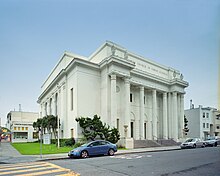
The Internet Archive is an American digital library with the stated mission of "universal access to all knowledge."[notes 2][notes 3] It provides free public access to collections of digitized materials, including websites, software applications/games, music, movies/videos, moving images, and millions of books. In addition to its archiving function, the Archive is an activist organization, advocating a free and open Internet. The Internet Archive currently holds over 20 million books and texts, 3 million movies and videos, 400,000 software programs, 7 million audio files, and 463 billion web pages in the Wayback Machine.
The Internet Archive allows the public to upload and download digital material to its data cluster, but the bulk of its data is collected automatically by its web crawlers, which work to preserve as much of the public web as possible. Its web archive, the Wayback Machine, contains hundreds of billions of web captures.[notes 4][4] The Archive also oversees one of the world's largest book digitization projects.
Operations[edit]
 | This section needs to be updated. Please update this article to reflect recent events or newly available information.(May 2020) |
The Archive is a 501(c)(3) nonprofit operating in the United States. It has an annual budget of $10 million, derived from a variety of sources: revenue from its Web crawling services, various partnerships, grants, donations, and the Kahle-Austin Foundation.[5] The Internet Archive manages periodic funding campaigns, like the one started in December 2019 with a goal of reaching donations for $6 million.[6]
Its headquarters are in San Francisco, California. From 1996 to 2009, headquarters were in the Presidio of San Francisco, a former U.S. military base. Since 2009, headquarters have been at 300 Funston Avenue in San Francisco, a former Christian Science Church.
At one time, most of its staff worked in its book-scanning centers; as of 2019, scanning is performed by 100 paid operators worldwide.[7] The Archive has data centers in three Californian cities: San Francisco, Redwood City, and Richmond. To prevent losing the data in case of e.g. a natural disaster, the Archive attempts to create copies of (parts of) the collection at more distant locations, currently including the Bibliotheca Alexandrina[notes 5] in Egypt and a facility in Amsterdam.[8] The Archive is a member of the International Internet Preservation Consortium[9] and was officially designated as a library by the state of California in 2007.[notes 6]
History[edit]

Brewster Kahle founded the archive in May 1996 at around the same time that he began the for-profit web crawling company Alexa Internet.[notes 7] In October 1996, the Internet Archive had begun to archive and preserve the World Wide Web in large quantities,[notes 8] though it saved the earliest pages in May 1996.[10][11] The archived content wasn't available to the general public until 2001, when it developed the Wayback Machine.
In late 1999, the Archive expanded its collections beyond the Web archive, beginning with the Prelinger Archives. Now the Internet Archive includes texts, audio, moving images, and software. It hosts a number of other projects: the NASA Images Archive, the contract crawling service Archive-It, and the wiki-editable library catalog and book information site Open Library. Soon after that, the archive began working to provide specialized services relating to the information access needs of the print-disabled; publicly accessible books were made available in a protected Digital Accessible Information System (DAISY) format.[notes 9]
According to its website:[notes 10]
Most societies place importance on preserving artifacts of their culture and heritage. Without such artifacts, civilization has no memory and no mechanism to learn from its successes and failures. Our culture now produces more and more artifacts in digital form. The Archive's mission is to help preserve those artifacts and create an Internet library for researchers, historians, and scholars.
In August 2012, the archive announced[12] that it has added BitTorrent to its file download options for more than 1.3 million existing files, and all newly uploaded files.[13][14] This method is the fastest means of downloading media from the Archive, as files are served from two Archive data centers, in addition to other torrent clients which have downloaded and continue to serve the files.[13][notes 11] On November 6, 2013, the Internet Archive's headquarters in San Francisco's Richmond District caught fire,[15] destroying equipment and damaging some nearby apartments.[16] According to the Archive, it lost a side-building housing one of 30 of its scanning centers; cameras, lights, and scanning equipment worth hundreds of thousands of dollars; and "maybe 20 boxes of books and film, some irreplaceable, most already digitized, and some replaceable".[17] The nonprofit Archive sought donations to cover the estimated $600,000 in damage.[18]
In November 2016, Kahle announced that the Internet Archive was building the Internet Archive of Canada, a copy of the archive to be based somewhere in Canada. The announcement received widespread coverage due to the implication that the decision to build a backup archive in a foreign country was because of the upcoming presidency of Donald Trump.[19][20][21] Kahle was quoted as saying:
On November 9th in America, we woke up to a new administration promising radical change. It was a firm reminder that institutions like ours, built for the long-term, need to design for change. For us, it means keeping our cultural materials safe, private and perpetually accessible. It means preparing for a Web that may face greater restrictions. It means serving patrons in a world in which government surveillance is not going away; indeed it looks like it will increase. Throughout history, libraries have fought against terrible violations of privacy—where people have been rounded up simply for what they read. At the Internet Archive, we are fighting to protect our readers' privacy in the digital world.[19]
Since 2018, the Internet Archive visual arts residency, which is organized by Amir Saber Esfahani and Andrew McClintock, helps connect artists with the archive's over 48 petabytes[notes 12] of digitized materials. Over the course of the yearlong residency, visual artists create a body of work which culminates in an exhibition. The hope is to connect digital history with the arts and create something for future generations to appreciate online or off.[22] Previous artists in residence include Taravat Talepasand, Whitney Lynn, and Jenny Odell.[23]
In 2019, the main scanning operations were moved to Cebu in the Philippines and were planned to reach a pace of half a million books scanned per year, until an initial target of 4 million books. The Internet Archive acquires most materials from donations, such as a donation of 250 thousand books from Trent University and hundreds of thousands of 78 rpm discs from Boston Public Library. All material is then digitized and retained in digital storage, while a digital copy is returned to the original holder and the Internet Archive's copy, if not in the public domain, is borrowed to patrons worldwide one at a time under the controlled digital lending (CDL) theory of the first-sale doctrine.[24] Meanwhile, in the same year its headquarters in San Francisco received a bomb threat which forced a temporary evacuation of the building.[25]
Web archiving[edit]
Wayback Machine[edit]

The Internet Archive capitalized on the popular use of the term "WABAC Machine" from a segment of The Adventures of Rocky and Bullwinkle cartoon (specifically Peabody's Improbable History), and uses the name "Wayback Machine" for its service that allows archives of the World Wide Web to be searched and accessed.[26] This service allows users to view some of the archived web pages. The Wayback Machine was created as a joint effort between Alexa Internet and the Internet Archive when a three-dimensional index was built to allow for the browsing of archived web content.[notes 13] Millions of web sites and their associated data (images, source code, documents, etc.) are saved in a database. The service can be used to see what previous versions of web sites used to look like, to grab original source code from web sites that may no longer be directly available, or to visit web sites that no longer even exist. Not all web sites are available because many web site owners choose to exclude their sites. As with all sites based on data from web crawlers, the Internet Archive misses large areas of the web for a variety of other reasons. A 2004 paper found international biases in the coverage, but deemed them "not intentional".[27]
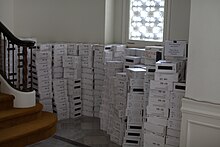
A "Save Page Now" archiving feature was made available in October 2013,[28] accessible on the lower right of the Wayback Machine's main page.[notes 14] Once a target URL is entered and saved, the web page will become part of the Wayback Machine.[28] Through the Internet address web.archive.org,[29] users can upload to the Wayback Machine a large variety of contents, including PDF and data compression file formats. The Wayback Machine creates a permanent local URL of the upload content, that is accessible in the web, even if not listed while searching in the http://archive.org official website.
May 12, 1996, is the date of the oldest archived pages on the archive.org WayBack Machine, such as infoseek.com.[30]
In October 2016, it was announced that the way web pages are counted would be changed, resulting in the decrease of the archived pages counts shown.[31]
| A Using the old counting system used before October 2016 |
| B Using the new counting system used after October 2016 |
Archive-It[edit]
Created in early 2006, Archive-It[33] is a web archiving subscription service that allows institutions and individuals to build and preserve collections of digital content and create digital archives. Archive-It allows the user to customize their capture or exclusion of web content they want to preserve for cultural heritage reasons. Through a web application, Archive-It partners can harvest, catalog, manage, browse, search, and view their archived collections.[34]
In terms of accessibility, the archived web sites are full text searchable within seven days of capture.[35] Content collected through Archive-It is captured and stored as a WARC file. A primary and back-up copy is stored at the Internet Archive data centers. A copy of the WARC file can be given to subscribing partner institutions for geo-redundant preservation and storage purposes to their best practice standards.[36] Periodically, the data captured through Archive-It is indexed into the Internet Archive's general archive.
As of March 2014[update], Archive-It had more than 275 partner institutions in 46 U.S. states and 16 countries that have captured more than 7.4 billion URLs for more than 2,444 public collections. Archive-It partners are universities and college libraries, state archives, federal institutions, museums, law libraries, and cultural organizations, including the Electronic Literature Organization, North Carolina State Archives and Library, Stanford University, Columbia University, American University in Cairo, Georgetown Law Library, and many others.
Book collections[edit]
Text collection[edit]
The Internet Archive operates 33 scanning centers in five countries, digitizing about 1,000 books a day for a total of more than 2 million books,[37] financially supported by libraries and foundations.[notes 28] As of July 2013[update], the collection included 4.4 million books with more than 15 million downloads per month.[37] As of November 2008[update], when there were approximately 1 million texts, the entire collection was greater than 0.5 petabytes, which includes raw camera images, cropped and skewed images, PDFs, and raw OCR data.[38] Between about 2006 and 2008, Microsoft had a special relationship with Internet Archive texts through its Live Search Books project, scanning more than 300,000 books that were contributed to the collection, as well as financial support and scanning equipment. On May 23, 2008, Microsoft announced it would be ending the Live Book Search project and no longer scanning books.[39] Microsoft made its scanned books available without contractual restriction and donated its scanning equipment to its former partners.[39]

Around October 2007, Archive users began uploading public domain books from Google Book Search.[notes 29] As of November 2013[update], there were more than 900,000 Google-digitized books in the Archive's collection;[notes 30] the books are identical to the copies found on Google, except without the Google watermarks, and are available for unrestricted use and download.[40] Brewster Kahle revealed in 2013 that this archival effort was coordinated by Aaron Swartz, who with a "bunch of friends" downloaded the public domain books from Google slow enough and from enough computers to stay within Google's restrictions. They did this to ensure public access to the public domain. The Archive ensured the items were attributed and linked back to Google, which never complained, while libraries "grumbled". According to Kahle, this is an example of Swartz's "genius" to work on what could give the most to the public good for millions of people.[41]Besides books, the Archive offers free and anonymous public access to more than four million court opinions, legal briefs, or exhibits uploaded from the United States Federal Courts' PACER electronic document system via the RECAP web browser plugin. These documents had been kept behind a federal court paywall. On the Archive, they had been accessed by more than six million people by 2013.[41]
The Archive's BookReader web app,[42] built into its website, has features such as single-page, two-page, and thumbnail modes; fullscreen mode; page zooming of high-resolution images; and flip page animation.[42][43]
Number of texts for each language[edit]
| Number of all texts (December 9, 2019) | 22,197,912[44] |
|---|
| Language | Number of texts (November 27, 2015) |
|---|---|
| English | 6,553,945[notes 31] |
| French | 358,721[notes 32] |
| German | 344,810[notes 33] |
| Spanish | 134,170[notes 34] |
| Chinese | 84,147[notes 35] |
| Arabic | 66,786[notes 36] |
| Dutch | 30,237[notes 37] |
| Portuguese | 25,938[notes 38] |
| Russian | 22,731[notes 39] |
| Urdu | 14,978[notes 40] |
| Japanese | 14,795[notes 41] |
Number of texts for each decade[edit]
|
|
Open Library[edit]
The Open Library is another project of the Internet Archive. The wiki seeks to include a web page for every book ever published: it holds 25 million catalog records of editions. It also seeks to be a web-accessible public library: it contains the full texts of approximately 1,600,000 public domain books (out of the more than five million from the main texts collection), as well as in-print and in-copyright books,[45] which are fully readable, downloadable[46][47] and full-text searchable;[48] it offers a two-week loan of e-books in its Books to Borrow lending program for over 647,784 books not in the public domain, in partnership with over 1,000 library partners from 6 countries[37][49] after a free registration on the web site. Open Library is a free and open-source software project, with its source code freely available on GitHub.
The Open Library faces objections from some authors and the Society of Authors, who hold that the project is distributing books without authorization and is thus in violation of copyright laws,[50] and four major publishers initiated a copyright infringement lawsuit against the Internet Archive in June 2020 to stop the Open Library project.[51]
List of digitizing sponsors for ebooks[edit]
As of December 2018, over 50 sponsors helped the Internet Archive provide over 5 million scanned books (text items). Of these, over 2 million were scanned by Internet Archive itself, funded either by itself or by MSN, the University of Toronto or the Internet Archive's founder's Kahle/Austin Foundation.[52]
The collections for scanning centers often include also digitisations sponsored by their partners, for instance the University of Toronto performed scans supported by other Canadian libraries.
| Sponsor | Main collection | Number of texts sponsored[52] |
|---|---|---|
| [1] | 1,302,624 | |
| Internet Archive | [2] | 917,202 |
| Kahle/Austin Foundation | 471,376 | |
| MSN | [3] | 420,069 |
| University of Toronto | [4] | 176,888 |
| U.S. Department of Agriculture, National Agricultural Library | 150,984 | |
| Wellcome Library | 127,701 | |
| University of Alberta Libraries | [5] | 100,511 |
| China-America Digital Academic Library (CADAL) | [6] | 91,953 |
| Sloan Foundation | [7] | 83,111 |
| The Library of Congress | [8] | 79,132 |
| University of Illinois Urbana-Champaign | [9] | 72,269 |
| Princeton Theological Seminary Library | 66,442 | |
| Boston Library Consortium Member Libraries | 59,562 | |
| Jisc and Wellcome Library | 55,878 | |
| Lyrasis members and Sloan Foundation | [10] | 54,930 |
| Boston Public Library | 54,067 | |
| Nazi War Crimes and Japanese Imperial Government Records Interagency Working Group | 51,884 | |
| Getty Research Institute | [11] | 46,571 |
| Greek Open Technologies Alliance through Google Summer of Code | 45,371 | |
| University of Ottawa | 44,808 | |
| BioStor | 42,919 | |
| Naval Postgraduate School, Dudley Knox Library | 37,727 | |
| University of Victoria Libraries | 37,650 | |
| The Newberry Library | 37,616 | |
| Brigham Young University | 33,784 | |
| Columbia University Libraries | 31,639 | |
| University of North Carolina at Chapel Hill | 29,298 | |
| Institut national de la recherche agronomique | 26,293 | |
| Montana State Library | 25,372 | |
| Allen County Public Library Genealogy Center | [12] | 24,829 |
| Michael Best | 24,825 | |
| Bibliotheca Alexandrina | 24,555 | |
| University of Illinois Urbana-Champaign Alternates | 22,726 | |
| Institute of Botany, Chinese Academy of Sciences | 21,468 | |
| University of Florida, George A. Smathers Libraries | 20,827 | |
| Environmental Data Resources, Inc. | 20,259 | |
| Public.Resource.Org | 20,185 | |
| Smithsonian Libraries | 19,948 | |
| Eric P. Newman Numismatic Education Society | 18,781 | |
| NIST Research Library | 18,739 | |
| Open Knowledge Commons, United States National Library of Medicine | 18,091 | |
| Biodiversity Heritage Library | [13] | 17,979 |
| Ontario Council of University Libraries and Member Libraries | 17,880 | |
| Corporation of the Presiding Bishop, The Church of Jesus Christ of Latter-day Saints | 16,880 | |
| Leo Baeck Institute Archives | 16,769 | |
| North Carolina Digital Heritage Center | [14] | 14,355 |
| California State Library, Califa/LSTA Grant | 14,149 | |
| Duke University Libraries | 14,122 | |
| The Black Vault | 13,765 | |
| Buddhist Digital Resource Center | 13,460 | |
| John Carter Brown Library | 12,943 | |
| MBL/WHOI Library | 11,538 | |
| Harvard University, Museum of Comparative Zoology, Ernst Mayr Library | [15] | 10,196 |
| AFS Intercultural Programs | 10,114 |
In 2017, the MIT Press authorized the Internet Archive to digitize and lend books from the press's backlist,[53] with financial support from the Arcadia Fund.[54][55] A year later, the Internet Archive received further funding from the Arcadia Fund to invite some other university presses to partner with the Internet Archive to digitize books, a project called "Unlocking University Press Books".[56][57]
Media collections[edit]


In addition to web archives, the Internet Archive maintains extensive collections of digital media that are attested by the uploader to be in the public domain in the United States or licensed under a license that allows redistribution, such as Creative Commons licenses. Media are organized into collections by media type (moving images, audio, text, etc.), and into sub-collections by various criteria. Each of the main collections includes a "Community" sub-collection (formerly named "Open Source") where general contributions by the public are stored.
Audio collection[edit]
The Audio Archive includes music, audiobooks, news broadcasts, old time radio shows, and a wide variety of other audio files. There are more than 200,000 free digital recordings in the collection. The subcollections include audio books and poetry, podcasts,[58] non-English audio, and many others.[notes 64] The sound collections are curated by B. George, director of the ARChive of Contemporary Music.[59]
The Live Music Archive sub-collection includes more than 170,000 concert recordings from independent musicians, as well as more established artists and musical ensembles with permissive rules about recording their concerts, such as the Grateful Dead, and more recently, The Smashing Pumpkins. Also, Jordan Zevon has allowed the Internet Archive to host a definitive collection of his father Warren Zevon's concert recordings. The Zevon collection ranges from 1976–2001 and contains 126 concerts including 1,137 songs.[60]
The Great 78 Project aims to digitize 250,000 78 rpm singles (500,000 songs) from the period between 1880 and 1960, donated by various collectors and institutions. It has been developed in collaboration with the Archive of Contemporary Music and George Blood Audio, responsible for the audio digitization.[59]
Brooklyn Museum[edit]
This collection contains approximately 3,000 items from Brooklyn Museum.[notes 65]
Images collection[edit]
This collection contains more than 880,000 items.[notes 66]Cover Art Archive, Metropolitan Museum of Art - Gallery Images, NASA Images, Occupy Wall StreetFlickr Archive, and USGS Maps and are some sub-collections of Image collection.
Cover Art Archive[edit]
The Cover Art Archive is a joint project between the Internet Archive and MusicBrainz, whose goal is to make cover art images on the Internet. This collection contains more than 330,000 items.[notes 67]
Metropolitan Museum of Art images[edit]
The images of this collection are from the Metropolitan Museum of Art. This collection contains more than 140,000 items.[notes 68]
NASA Images[edit]
The NASA Images archive was created through a Space Act Agreement between the Internet Archive and NASA to bring public access to NASA's image, video, and audio collections in a single, searchable resource. The IA NASA Images team worked closely with all of the NASA centers to keep adding to the ever-growing collection.[61] The nasaimages.org site launched in July 2008 and had more than 100,000 items online at the end of its hosting in 2012.
Occupy Wall Street Flickr archive[edit]
This collection contains creative commons licensed photographs from Flickr related to the Occupy Wall Street movement. This collection contains more than 15,000 items.[notes 69]
USGS Maps[edit]
This collection contains more than 59,000 items from Libre Map Project.[notes 70]
Machinima archive[edit]
One of the sub-collections of the Internet Archive's Video Archive is the Machinima Archive. This small section hosts many Machinima videos. Machinima is a digital artform in which computer games, game engines, or software engines are used in a sandbox-like mode to create motion pictures, recreate plays, or even publish presentations or keynotes. The archive collects a range of Machinima films from internet publishers such as Rooster Teeth and Machinima.com as well as independent producers. The sub-collection is a collaborative effort among the Internet Archive, the How They Got Game research project at Stanford University, the Academy of Machinima Arts and Sciences, and Machinima.com.[notes 71]
Mathematics – Hamid Naderi Yeganeh[edit]
This collection contains mathematical images created by mathematical artist Hamid Naderi Yeganeh.[notes 72]
Microfilm collection[edit]
This collection contains approximately 160,000 items from a variety of libraries including the University of Chicago Libraries, the University of Illinois at Urbana-Champaign, the University of Alberta, Allen County Public Library, and the National Technical Information Service.[notes 73][notes 74]
Moving image collection[edit]
The Internet Archive holds a collection of approximately 3,863 feature films.[notes 75] Additionally, the Internet Archive's Moving Image collection includes: newsreels, classic cartoons, pro- and anti-war propaganda, The Video Cellar Collection, Skip Elsheimer's "A.V. Geeks" collection, early television, and ephemeral material from Prelinger Archives, such as advertising
The Digital Story
This has been the year of making my workflows better, and one of the improvements that I wanted to make was increasing the efficiency of creating product shots for TheFilmCameraShop. My theory was that using Capture One's excellent tethered capability would speed things up. And now that I've done it, I was right.
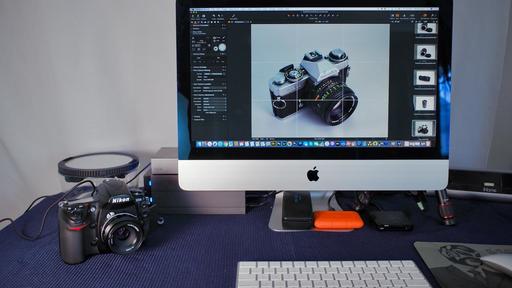
Tethering involves connecting a supported camera via USB cable directly to a computer running Capture One Pro. Once the connection is made, the camera will appear in the Capture Tab where you have a myriad of options and controls.
You can either control the camera from the application, or (as I do) shoot with the camera using its shutter button and instantly view the image on the computer screen. The advantage of this is you're looking at a large, detailed rendering where you can inspect every detail on the fly (and quickly) before moving on to the next shot. There are no surprises with tethered photography.
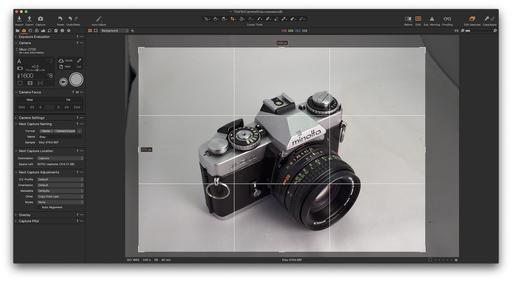
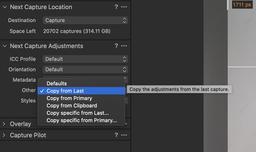
One of the features that really helps speed up this workflow is the "Copy from Last" setting in the "Next Capture Adjustments." It works like this: You take the first shot, then apply a few tweaks like cropping and exposure. The application remembers those adjustments and applies them automatically to the next image. It's fantastic.
The speed of the shoot really picks up at this point. Take a picture, adjustments applied, review it, take the next picture.
I've set up my shooting bay next to the worktable with my iMac. It's super convenient. My capture camera is a Nikon D700 with a modified focusing screen that gives me a micro prism collar and matte surface. This makes it easy to manually focus the Voigtlander Ultron 40mm f/2 SL IIS Aspherical lens. (BTW: the Voigtlander is a great lens for this task. It has a CPU chip for the Nikon, focuses as close as 1:4, and has beautiful image quality.) If I need more resolution than the 12MP from the D700 (which I rarely do), then I can switch to the Nikon D610 which has 24MP. But that feels like overkill for catalog product shots.
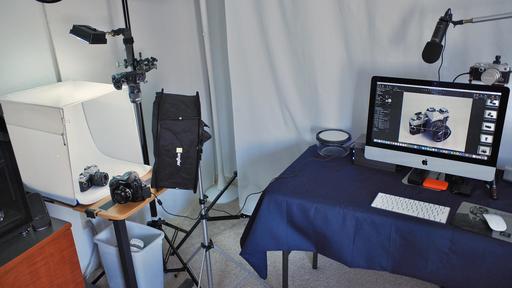
Capture One Pro tethers out of the box with most Nikons and Canons, and selected Sonys and Fujifilm cameras. Unfortunately, there isn't tethered support for Olympus and Panasonic Micro Four Thirds. Too bad, because my EM-1 Mark II with the 30mm macro would be a great capture device for this workflow as well.
Aside from that disappointment, what I really like about this system is that when I'm done with the shoot, I'm done. I've totally eliminated the post production step. I simply output my selects, upload them to TheFilmCameraShop, and I'm finished. I've just improved my efficiency for creating new catalog pages.
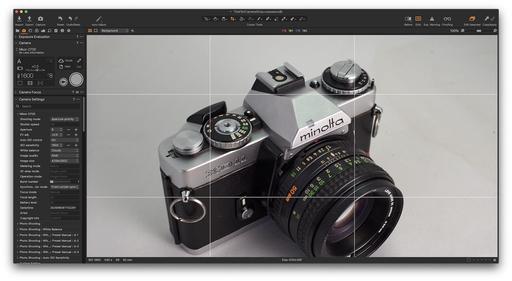
One final note: Product photography isn't the most glamorous activity when you're a street photographer at heart. But I have to say, using the classic Nikon D700 with an upgraded SLR-style focusing screen and the beautiful Ulton 40mm lens that's as smooth as butter to operate, has made this otherwise mundane task quite enjoyable. Switching to tethered with Capture One Pro was the icing on the cake.
Learn Capture One Pro Quickly
If you're new to Capture One Pro, you may want to check out my latest online class, Capture One Pro 20 Essential Training on LinkedIn Learning, or, if you're a lynda.com subscriber, you can watch it there as well. It will get you up and running in no time at all.
If you don't have Capture One Pro yet, you can download the 30-day free trial (Mac/Win). No credit card is required, and it's a fully functioning version.
Product Links and Comments
There are product links in this article that contain affiliate tags. In some cases, depending on the product, The Digital Story may receive compensation if you purchase a product via one of those links. There is no additional cost to you.
You can share your thoughts at the TDS Facebook page, where I'll post this story for discussion.
What’s New in the capture one 9 download Archives?
Screen Shot

System Requirements for Capture one 9 download Archives
- First, download the Capture one 9 download Archives
-
You can download its setup from given links:


